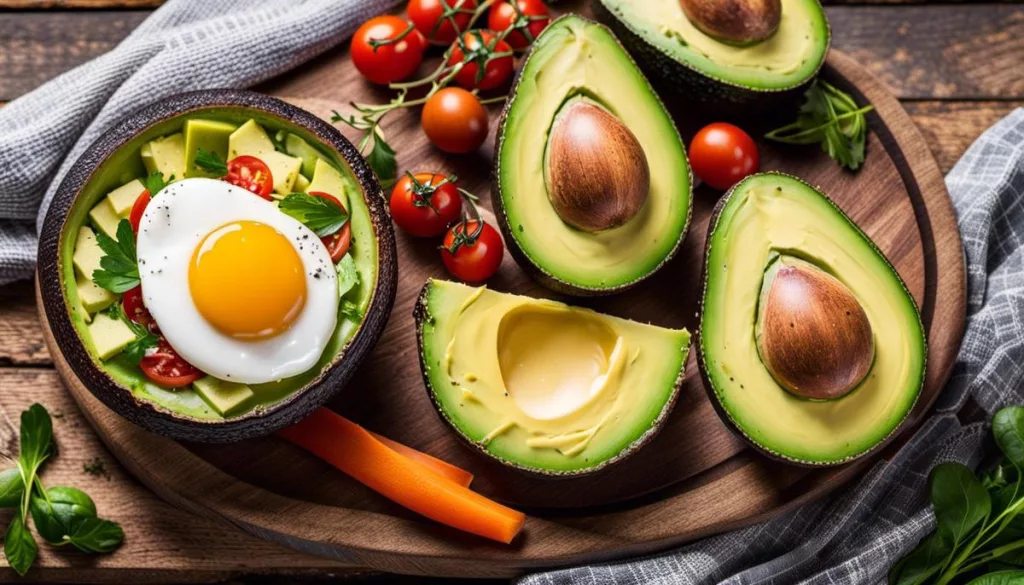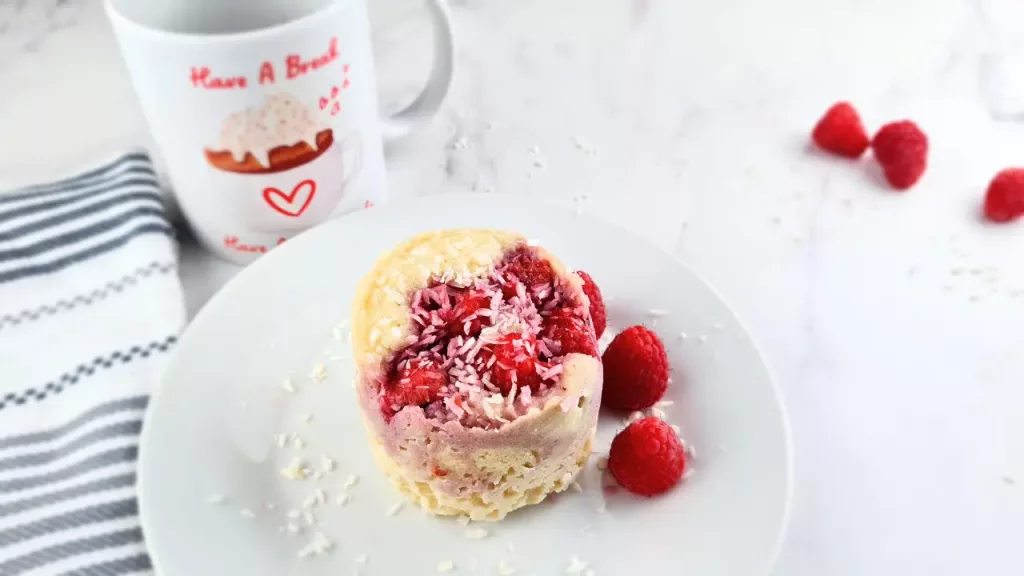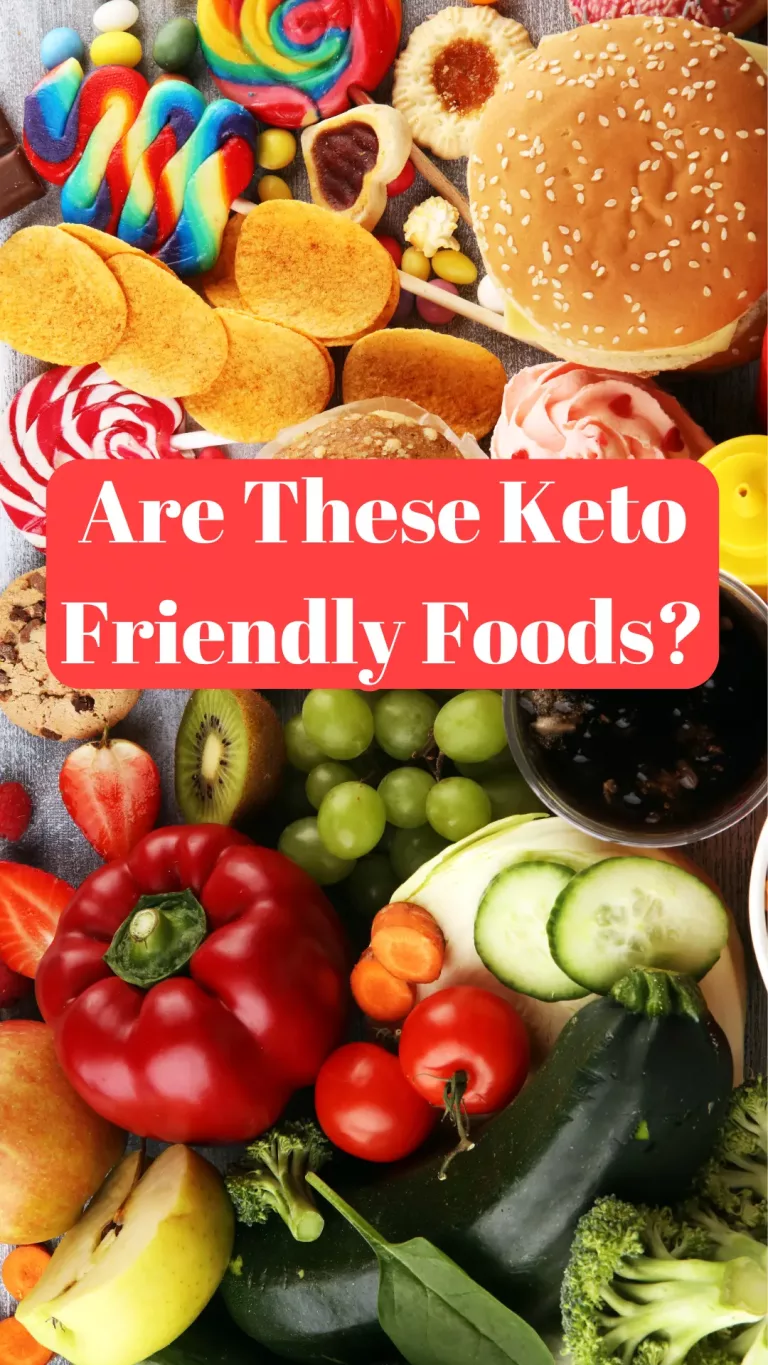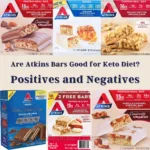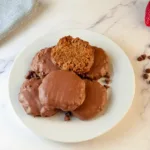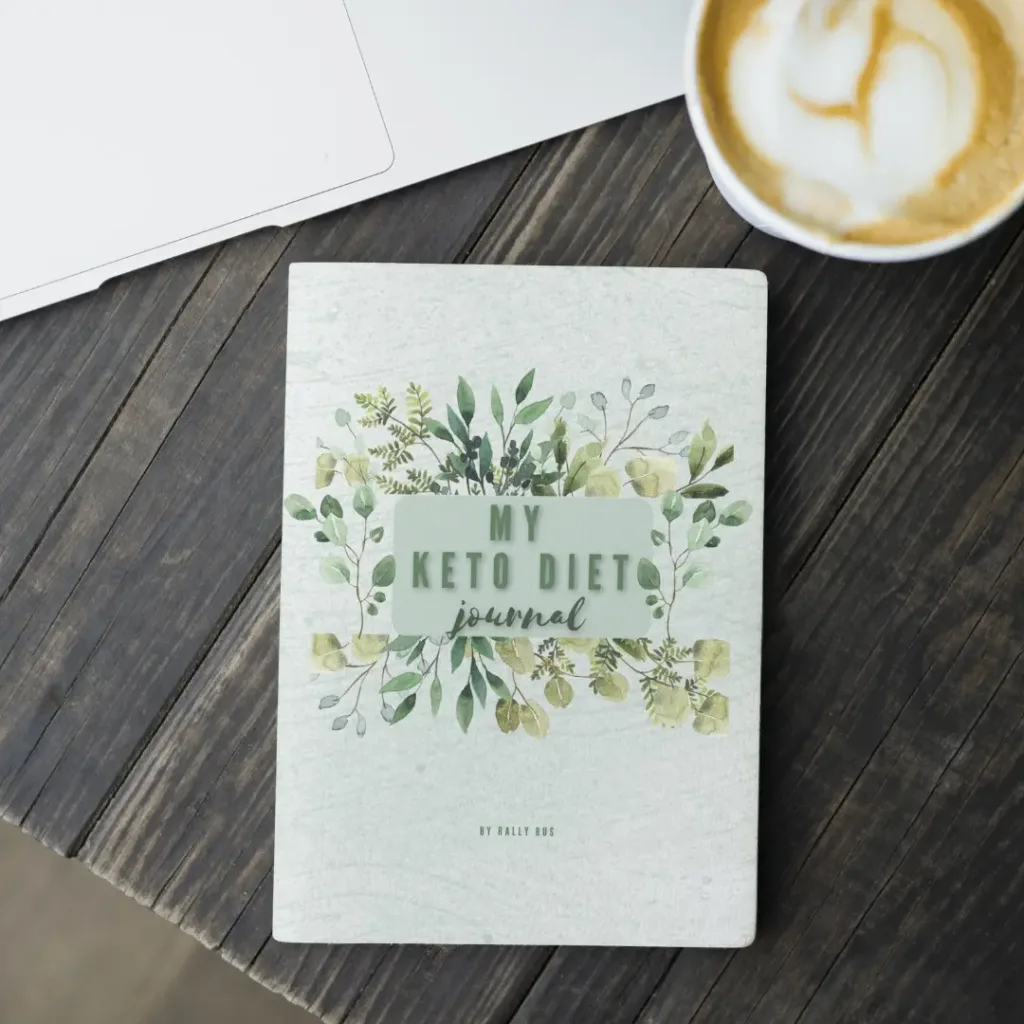The ketogenic, or keto, diet is a popular eating plan known for its high fat, moderate protein, and very low carbohydrate intake. This diet applies the principle of stimulating the body’s metabolic state into ketosis. Whereby the body turns to fat as its primary fuel source instead of carbohydrates. It’s not just about eating less carbs. You need to know what types of carbs there are and how they affect you. Some high-carb foods are not recommended on the keto diet, such as pasta and bread. Even some fruits and vegetables have too many carbs. You should also avoid sugary foods, processed or natural. Some foods that seem like they’re good for the keto diet might stop it from working. It’s important to find out which foods to avoid if you want to do the keto diet properly.
Table of Contents
Understand the Keto Diet In Short
The ketogenic, or keto, diet
The ketogenic, or keto, diet is a high-fat, moderate-protein, and very low-carbohydrate diet. The principle behind it is to bring the body into a metabolic state known as ketosis. In this state, the body, lacking enough carbs for energy, starts burning fat.
Main aim of the keto diet
The main aim of the keto diet is to induce the body to shift from burning carbohydrates to burning fats for energy. This ultimately leads to weight loss. Beyond this, some people follow the diet to manage certain medical conditions like epilepsy, while others hope to reap other benefits like increasing mental clarity and reducing acne.
Nutrient breakdown of the keto diet
The exact nutrient breakdown varies somewhat among different versions of the keto diet, but generally, it consists of about 70-80% of calories from fat, 10-20% from protein, and about 5-10% from carbohydrates. This means only about 20-50 grams of carbohydrates per day.
Avoiding certain fats
While the keto diet requires you to eat a high amount of fats, not all fats are the same. Trans fats, such as margarine or other spreads, which are found in processed or packaged foods, should be avoided. These foods often contain high amounts of sodium, which is not beneficial for the keto diet or for our health.
Avoiding fruits
Fruit is generally avoided on the ketogenic diet due to its typically high sugar content. This includes bananas, apples, oranges, and most other fruits. Avocados are an exception due to their high fat and low net-carb content.
Are you wondering what are the best keto friendly fruits? Read here: The Top Low Carb Keto Fruits to Help You Beat Sugar Cravings
Avoiding complex carbohydrates
Complex carbohydrates like whole grains, beans, and legumes should also be avoided. These foods are high in carbs that can pull the body out of ketosis.
Do you want to know the best keto friendly vegetables? Read here: Your Guide To Keto Friendly Vegetables: What To Include And Avoid
Avoiding high-carb beverages
Alcohol typically contains a lot of sugar, so most alcoholic beverages should be avoided on a keto diet. Beverages of any kind that are high in sugar or carbs, such as soda, fruit juice, and certain types of coffee or tea beverages, are also ill-advised.
Concerns with “low-fat” or “diet” products
“Low-fat” or “diet” products can be problematic, as they often make up for the loss of fat with sugar or other carbohydrates. These products can inadvertently lead to overconsumption of sugar and potential health risks like obesity and diabetes. The label can also encourage larger portions, undermining weight management efforts. Opting for whole, minimally processed foods offers a wiser approach to maintaining overall well-being.
Avoiding certain dairy products
When you are choosing dairy products, pay attention to how much lactose they have. Low-fat or fat-free milk might have a lot of sugar because of the lactose. Some cheeses might also have a lot of carbohydrates. It is better to avoid those products and choose full-fat dairy instead. Full-fat dairy has less added sugar and is less processed, so it is better for your health. You can make a small change in your diet by picking the right dairy products for a healthier lifestyle. Choose wisely and go for full-fat dairy alternatives.
Conclusively, following a ketogenic – or keto – diet requires a keen avoidance of high-carbohydrate foods. Although this might make the list of foods to avoid seem rather restrictive, you can still enjoy a diverse range of delicious and nutritious foods that fulfil the requirements of this diet plan.
Read more here: Keto Diet Guide for Beginners: Complete Guide to Getting Started
The Role of Carbs in Keto
Understanding Carbohydrates in the Keto Diet
The keto diet is famously low-carb, obligating individuals to significantly cut back on carbohydrate consumption and primarily replace it with healthy fats. The overarching aim is to force the body into a metabolic state known as ketosis – this is when the body turns to burn fat as its primary source of energy as opposed to glucose, which is derived from carbs.
Usually, our bodies preferentially utilize carbohydrates for energy since they can be easily broken down into glucose. Nevertheless, when you adopt a low-carb diet like keto, your body doesn’t receive enough carbohydrates to convert into the glucose it needs for energy. Instead, your liver starts breaking down fat into ketones, supplying a new source of energy – precisely the metabolic state of ketosis.
A critical aspect of maintaining the keto diet is regulating the type of carbs you consume. While carbs are available in various forms, they are mainly segregated into two categories in the context of a keto diet – simple and complex.
Simple vs. Complex Carbs
Simple carbohydrates are made up of one or two sugar molecules. They are digested quicker and provide a fast energy boost. Foods like white bread, pastries, soda, and candy are loaded with simple carbs, and they should be avoided on a keto diet due to their high sugar content and lack of satisfying nutrients.
Complex carbohydrates are composed of three or more sugar molecules linked together. They are slowly digested, providing a steady release of energy over a longer period. These include foods like grains, legumes, and starchy vegetables. Although healthier than simple carbs, they are also not suitable for a keto diet as they have high-carb content.
What to Avoid Eating on a Keto Diet
Embarking on a keto diet goes beyond just reducing your sugar intake – it also requires you to be vigilant about the concealed carbs in your meals. The following foods are high in carbohydrates and therefore, should be minimized or avoided:
- Breads and grains: Although whole grains are healthier than white bread, they are high in carbs and should be avoided.
- Pasta: Regular pasta is loaded with carbohydrates and is incompatible with the keto diet.
- Fruits: With the exception of berries in moderation, most fruits are carb-dense and should be approached cautiously due to their high carb levels.
- Legumes: Despite their high fiber and protein content, beans, lentils, and chickpeas contain a significant level of carbs.
- Starchy vegetables: Avoid potatoes, sweet potatoes, corn, carrots, and other starch-rich vegetables.
- Sugary beverages: Regular sodas, juices, and other sweet drinks are filled with sugars and carbs.
- Alcohol: Various alcoholic drinks, especially beer and sweet liquors, are high in carbs and should be avoided.
While a necessary measure of carbs is vital for proper brain functioning, the main aim of the keto diet is to limit carb intake to a range of 5 – 10% of total daily calories. A large portion of calories must come from healthy fats and a moderate portion from proteins. This unique strategy aids in achieving the metabolic state of ketosis, where the body begins burning fat for energy instead of glucose obtained from carbs.
Get new recipes straight into your inbox!
We hate spam and promise to keep your email address safe.
Thank you!
You have successfully joined our subscriber list.
High-Carb Foods to Avoid
The Case with Rice and Pasta
The likes of rice and pasta are notable carb-heavy foods and should be dodged when you’re adhering to a keto diet. Consider this – a single cup of cooked white rice contains approximately 45 grams of carbohydrates, while the same quantity of cooked pasta has about 43 grams. This is almost double the daily carbohydrate intake threshold established in a typical ketogenic diet.
Bread and Bagels
Bread and bagels are also high in carbohydrates. One slice of white bread contains around 14 grams of carbs, and a medium bagel has a whopping 48 grams. Grain-based foods such as breads, pastas, and cereals are all high in carbs, so it’s best to avoid these if you’re following a ketogenic diet.
High-Sugar Fruits
While fruit is generally associated with a healthy diet, some fruits actually contain a lot of sugar and should be eaten in moderation or avoided altogether on the keto diet. For example, a single medium-sized banana can contain up to 27 grams of carbs. Other high-sugar fruits include grapes, cherries, pears, and oranges.
The Top Low Carb Keto Fruits to Help You Beat Sugar Cravings
Starchy Vegetables
Not all vegetables are created equal when it comes to the keto diet. Generally, root vegetables and tubers like potatoes, sweet potatoes, carrots, and beets are higher in carbs than green leafy vegetables. For instance, a medium baked potato can pack a staggering 37 grams of carbs, which is a significant proportion of your daily intake on a ketogenic diet.
Legumes and Beans
While they are high in fiber and protein, legumes and beans are also high in carbs. For instance, a cup of cooked lentils contains around 40 grams of carbs. Chickpeas, black beans and kidney beans also have high carb content and should be avoided on a keto diet.
Sugary Drinks
From soda and fruit juices to sports drinks and specialty coffee beverages, these drinks often contain an excessive amount of sugar, contributing to their high-carb count. Hence, they are best to be completely omitted from a keto diet.
Baked Goods and Sweets
This category includes anything from muffins and cookies to cakes and pies. These food items are typically high in sugar and refined flour, both of which are high in carbs. For example, one piece of chocolate cake can have up to 60 grams of carbs depending upon its ingredients and size.
Berrylicious Keto Mug Cake with Raspberries & Coconut Gluten Free Dessert
Beer
When embarking on a keto diet, it’s pivotal to be watchful of your alcohol intake, notably beers. This is due to their high carbohydrate content – a 12-ounce serving can rack up a significant 13 to 25 grams of carbs. Instead, favor options with fewer carbs such as dry wine or spirits, if you wish to splurge in a drink now and then.
High-Sugar Foods to Avoid
High-Sugar Foods to Sidestep on a Keto Diet
Following a keto diet also necessitates limiting high-sugar food consumption. This not only covers foods rich in processed sugar but also those naturally high in sugars. Notable contenders to avoid include sodas, candies, sweetened dairy products like yogurt and ice cream, fruits like bananas, oranges, and apples, and grains or starches such as rice and pasta. It’s also prudent to evade beans or legumes, processed foods, low-fat or diet products, and unhealthy fats.
Crucial to this diet is spotting “hidden sugars”, lurking in processed foods and not explicitly labeled as sugar. Take caution against sugars like fructose, glucose, sucrose, maltose, dextrose, and high fructose corn syrup. These sugars can harm your keto diet progress and potentially eject you out of the ketosis state.
Effects of High-Sugar Foods on Blood Sugar Levels and Ketosis
Eating high-sugar foods significantly and rapidly increases blood sugar levels, which causes insulin release. This hormonal response inhibits the process of ketosis, the metabolic state that the keto diet aims to achieve to burn fat efficiently. Insulin triggers the storage of excess glucose in the liver as glycogen. When the body has plenty of glycogen to burn for energy, it doesn’t need to burn fat, preventing ketosis.
In the keto diet, shifting your body’s primary fuel source from glucose to fat requires keeping your carbohydrate, and thus your sugar intake, low. A high-sugar diet would introduce a surplus of glucose that the body would need to burn before returning to fat-burning mode.
Embracing the Keto Diet
When you adopt a keto diet, you’re fundamentally overhauling your body’s energy system. This significant change demands a dramatic shift in your food habits, especially when it comes to sugar. By diminishing your carbohydrate intake and stepping up fat consumption, your body switches into a state of ketosis. This metabolic state makes your body incredibly efficient at burning fat for energy. Consequently, reading food labels and cooking meals at home become indispensable practices to effectively monitor your carb and sugar intake and ensure your keto diet is on the right course.
Moreover, to satisfy that lingering sweet tooth, some individuals opt for keto-friendly sweeteners like stevia and erythritol as substitutes for high-sugar foods. However, it’s worth noting that even these keto-approved alternatives should be used sparingly for a successful keto journey.
- All
- Keto Bread
- Keto Breakfast Recipes
- Keto Cakes Recipes
- Keto Desserts Recipes
- Keto Dinner Ideas
- Keto Ice Cream Recipes
- Keto Snacks
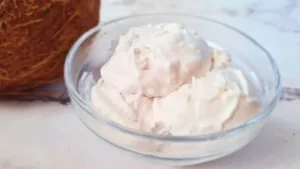
Keto Coconut Ice Cream – only 3 Ingredients, Sugar Free and Vegan

Keto Chocolate Peanut Butter Brownie Muffins – Sugar Free

Keto Chaffwich: The Ultimate Low Carb Sandwich Replacement
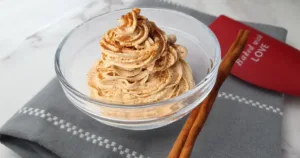
Keto Pumpkin Mousse

Coconut Clouds: Raffaello Keto Fat Bombs, Sugar Free Delight!

Easy High Protein Blueberry Cottage Cheese Ice Cream Recipe
Common Misleading Foods in Keto
Pitfalls of Low-Fat and Fat-Free Foods
Ironically, despite the keto diet’s reliance on fats for fuel, low-fat or fat-free foods—which might seem like an ideal fit—can derail your dietary progress. These seemingly healthy alternatives can pose a significant setback because they typically contain added sugars and other carbs to compensate for the decreasing flavor that results from reduced fat content. This trade off boosts their overall carb content and can interrupt your ketosis. As a result, for individuals on a ketogenic diet, full-fat products take precedence. Not only do they generally contain fewer carbs, but they also help maintain consistent energy levels.
Milk
While milk certainly has its health merits, it can be quite problematic for those following a ketogenic diet. Whole milk and even reduced-fat options contain a significant level of carbs primarily from lactose, which is a form of sugar. Therefore, regular consumption of milk can add up your carb intake quickly, taking you out of ketosis. Alternatively, you could opt for plant-based milk alternatives, or heavy cream which tends to have fewer carbs.
Beans and Lentils
Being loaded with fiber and protein, beans and lentils are usually touted as healthy food items. However, they also contain a high proportion of carbs which can hinder your goal to stay in ketosis on a ketogenic diet. You might want to substitute these legumes with low-glycemic vegetables or higher-fat legumes like olives or avocados.
Fruit
Even though fruits are powerhouses of vitamins, fibers, and numerous beneficial compounds, they unfortunately also contain high amounts of sugar and hence, carbs. Most fruits should, therefore, be avoided on a ketogenic diet. Berries, however, are a certain exception as they contain fewer carbs and can be enjoyed in moderation.
The Top Low Carb Keto Fruits to Help You Beat Sugar Cravings
Alcohol
Alcohol, especially sweetened and flavored options, are high in carbs. Consuming them can not only add up your carbohydrate intake but also disrupt the metabolic processes, slowing down the rate at which your body burns fat thereby knocking you out of ketosis. Stick to light beers or dry wines and spirits, which have fewer carbs and can align better with your diet plan.
Artificial Sweeteners
Artificial sweeteners may not contain carbs but they can still make you crave more sweet food leading to overeating. Moreover, some evidence suggests that they may adversely impact gut health and even blood sugar levels. It’s usually preferred to stick to natural sweeteners, such as stevia or erythritol, as they are less likely to disrupt your ketogenic dietary pattern.
Processed Foods
Even if they are labeled as low-carb or keto-friendly, processed foods should be generally avoided on a ketogenic diet. They are often filled with hidden carbs, preservatives, and unnatural additives that could disrupt your health progress, gut health, and even your state of ketosis. Making meals from scratch with fresh, whole ingredients is a better choice for maintaining a successful ketogenic diet.
Starchy Vegetables
While vegetables should form a large part of any healthy balanced diet, certain starchy vegetables such as potatoes, sweet potatoes, corn and carrots contain high levels of carbs and should be avoided on a keto diet. Opt instead for non-starchy vegetables like leafy greens, broccoli, and zucchini. They not only have less carbs but also come packed with essential vitamins and minerals.
Adopting the keto diet is not simply a matter of removing carbs; it’s about understanding the different types of carbohydrates, their effects on the body, and being informed about high-carb and high-sugar foods that should be avoided. It’s also about separating the wheat from the chaff when it comes to allegedly keto-friendly foods. Careful selection of foods is vital to maintain a state of ketosis and achieve the desired health benefits from this diet. Adopting a balanced and informed approach to the keto diet can lead to sustained weight loss, improved cardiovascular health, and potentially better control of blood sugar levels. Continue to learn and explore the diet to find a version of it that suits your lifestyle and dietary preferences, to ensure long-term adherence and success.
Get new recipes straight into your inbox!
We hate spam and promise to keep your email address safe.
Thank you!
You have successfully joined our subscriber list.


